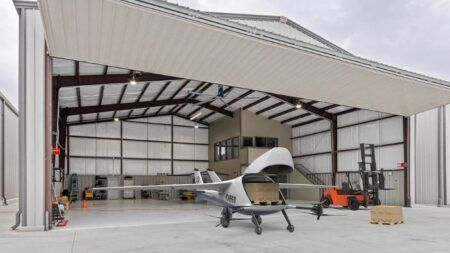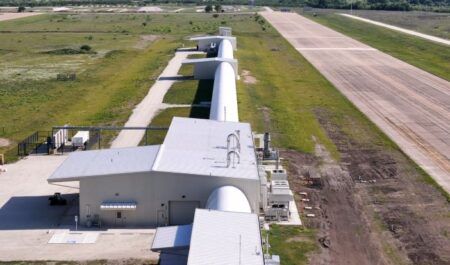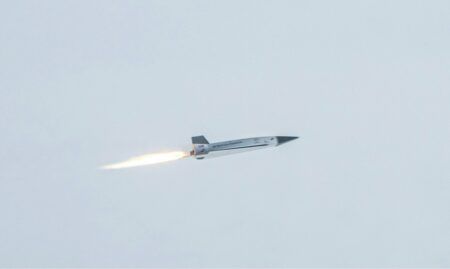by Hal Altan
Telemetry sounds like an esoteric term to someone who has never been exposed to it. Newcomers often feel lost with the terminology ‘old timer’ telemetry engineers, technicians and bosses use. Many of the terms, even though they have been used for many years by engineers, are not understood widely. Many values during telemetry tests are identified and selected without a real basis and good understanding ‘because we’ve always done it that way…’
In an attempt to help further the field of telemetry and demystify it, I’ve written a book, Telemetry Communications Systems Simplified, to describe, in a conversational tone, what a telemetry communications system engineer must study and understand.
The book covers the collection of telemetry data from sensors, and how to select the parameters, processes, procedures and essential values needed to use telemetry in aerospace and aircraft/missile testing. This blog offers a short introduction to both the book and telemetry.
What is telemetry?
Telemetry is the collection of data from a remote and usually fast-moving device for measurement purposes. It is used in aircraft/missile testing to track moving objects in action or collect data provided by instruments and sensors on the test object or to track the space launch vehicles.
Telemetry’s uses are not restricted to aerospace test ranges and space data. It is also used in the medical, industrial and entertainment sectors to collect consumer or factory data, or data about motorsport races or baseball players.
Unfortunately, common techniques such as wi-fi or cell phone technology cannot be used to track fast moving targets that are far away when the data is needed in real time. Testing usually requires the tracking of a moving object from a distance of 10km to 2000km, although in NASA’s case, an object as far away as Mars.
During flight tests, an aircraft, spacecraft, launch vehicle or missile uses airborne sensors to collect data from parts of the aircraft such as the wings or engine, about various aspects of its flight and variables such as pressure, vibration, stress and temperature.
Commutators combine this data and transmitters communicate all of it to a ground system, via a downlink. The ground system includes the antennas/LNA, the receivers, bit and frame synchronizers, and decommutators and computer equipment with software to record, view and interrogate the data.
Telemetry is also used in wind-tunnels or ‘hard to access’ places where we may prefer to collect data using wired telemetry. However, similar equipment subsets are still used, such as standardized bit synchs, frame synchs and decommutators.
Understanding concepts and terminology
I believe it is essential to understand the why part of telemetry in aerospace. Every telemetry instructor has their own method, but all too easily the bottom line, the reason, gets lost during the discussion and analysis process. This results in the young engineers learning the subject, but not understanding the reason for use and method.
There are many data points telemetry engineers must consider before they are ready to implement a telemetry communications system. There are many impediments they need to avoid, take precautions against and account for during calculations and preparations.
A clear understanding of telemetry’s essential concepts and terminology will also help an engineer prepare, design or set up the system. By understanding the reasons behind a design, the system parameters can be calculated and selected correctly for the project at hand.
Although there are standard answers to most of the concerns that may arise when implementing a telemetry communications system, there is not an answer for every situation readily available.
In some cases, engineers must use their creativity to resolve these issues prior to or during a mission. The telemetry engineer must at least be aware of the impediments and the possible remedies, prior to confronting these issues.
RF “black magic”
The intention of my book is to help test engineers go beyond simple definitions to understand concepts related to communication and telemetry systems, so that when they are reading, or listening to an old-timer boss about an obscure subject such as ‘commutation’, they are equipped with the necessary knowledge to discuss the topic.
It’s become common for those outside of telemetry to refer to RF subjects as ‘black magic’. Hopefully, the book can help eliminate this incorrect perception of complexity in RF and provide simpler solutions to many calculations.
The book, which was published in April covers:
- Conditioning of the sensor signals (instrumentation amplifier use).
- Sampling of the analog data for conversion to digital for minimum loss and to eliminate unnecessary use of bandwidth.
- Eliminating aliasing while sampling (anti-aliasing filter use).
- Signal to quantization-noise ratio (SQR) maximization.
- Commutation, premodulation filtering and transmission.
- Precautions for the channel noise and perturbations during data transfer.
- Transmit power and transmit antenna gain (EIRP-effective isotropic radiated power).
- Space loss and received signal level (with simple calculations).
- Receive antenna characteristics, G/T (“G over T,” figure of merit), feed characteristics, LNAs (Low Noise Amplifier).
- Reception with minimum noise degradation, improvement of Signal to Noise ratio (S/N) or Energy per bit to Noise Per Hertz ratio (Eb/N0).
- Bit synchronization (making the correct bit-edge decision).
- Eb/N0 after the bit synchronization, frame synchronization.
- Decommutation (serial-to-parallel conversion and identification of each data word based on its location in relation to the synchronization word) of the stream.
- Current value table (CVT) creation, data separation, and distribution to each station.
- Time insertion during the data collection on flight side or at the time of CVT development after decommutation.
- Recording – post-detection (data) and pre-detection (the raw Intermediate Frequency, IF recording), possibly time insertion during recording.
- National Aeronautics & Space Agency (NASA) time use (IRIG-A time, IRIG-B time resolutions), distribution of time signals in a communication environment.
- Receive antenna, receive distance and quality expectations, link calculations.
- Placement of the multiple receive antennas when there is not unlimited space in the receiver environment. Huygens diffraction effects, elimination. Practical methods of preparation.
- Reception side details: received signal level calculation, receiver sensitivity, IF bandwidth selection and settings, channel bandwidth need, receiver characteristics.
- Safeguards through range safety and Command Destruct System (CDS), the need and the characteristics, addition of this functionality to a regular system. (This is an important function for the telemetry communications system, however is not always discussed. This book simplifies it.)
- Distribution of the data upon receipt from the space or test vehicle through a ground or space network (with simple examples).
- Modulation methods popularly used in telemetry communications systems. (PCM/FM, PSK variations, QAM.)
- Forward Error Correction techniques popularly used in telemetry communications systems. (Convolutional coding / Viterbi decoding and Block coding simplified.)
These and more topics are also covered on the author’s website where a classroom presentation on telemetry can be downloaded for free, alongside telemetry resources including tables, link calculation programs, and an acronym list. The book Telemetry Communications Systems Simplified by Hal Altan is available from Amazon.
Hal has spent 40 years as a telemetry engineer and manager. He has been a vice president of engineering at telemetry companies such as Aydin, L-3 Communications and a principal engineer at Honeywell Aerospace.
The book is based on the author’s more than 10 years of experience in the industry and on courses he devised for and taught at several test and tracking centers, as well as international conferences, including the International Telemetering Conference (ITC).





